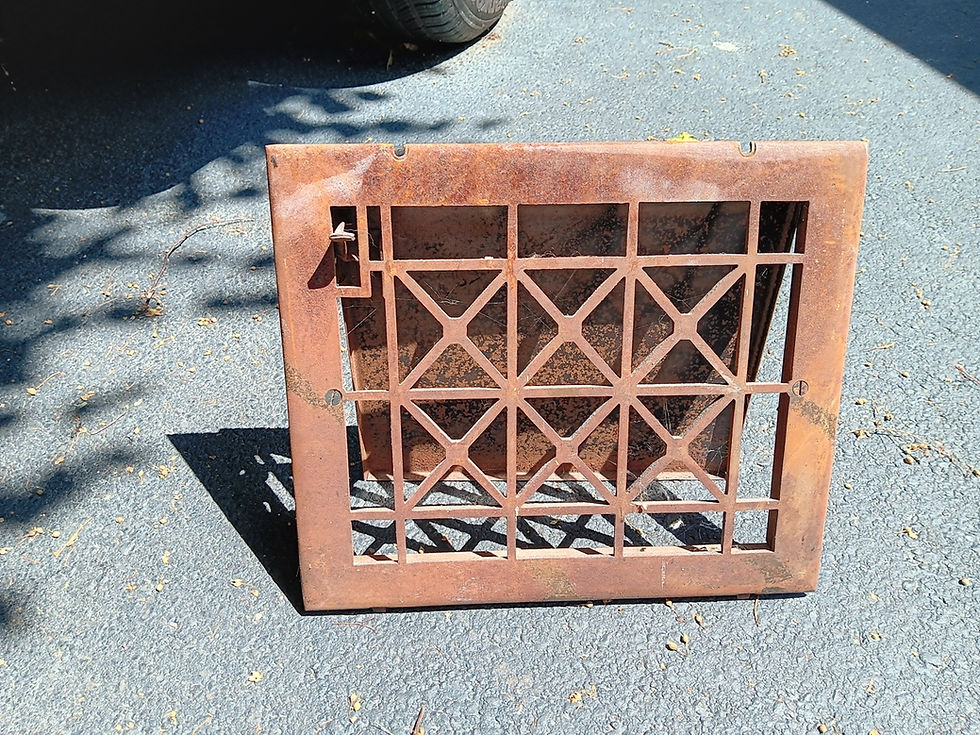Ideas from Ed: Your CHAIRiot awaits! (Vol. 7, Issue 1)
- edwardpetrus

- Jan 1, 2024
- 3 min read
It sure seems like I’ve been doing a lot of repairs to chairs lately. I guess that’s because they tend to be moved, stacked, rocked, and a lot more, in addition to simply being sat on. This particular chair was donated to our group (Lawrence County Partners for Preservation) to be offered in our fundraising auction last year. It didn’t sell, likely because of its condition. It’s actually a very nice oak chair, and has already been stripped for refinishing, but the butt-biting crack is simply something that turned people off.

Each time I walked past that chair in our storage area, I could hear it calling out “Ed, fix me! Fix me!” I decided to make the needed repairs, although I don’t know what the eventual disposition of that chair will be.
As with most projects like this, careful disassembly is needed. Many times (and this one included) stripping furniture loosens up glued joints, so the main disassembly was really only taking out the screws that hold things tight. Old screws are always ones that need a flat-bladed screwdriver, so if you are replacing damaged screws and authenticity is important, you should put that type of screw back in. Using Phillips-head screws is a no-no. (Ed’s note: Whenever you discard anything “old” that has slotted screws, you should remove the screws and save them for needs such as this.)

The seat popped right off in two pieces.

Although some of today’s glues are very strong, I really wanted to reinforce the joint between the two pieces, and opted for inserting dowel pegs. Here’s my doweling jig, and me drilling holes to match the diameter (3/8”) of the pins I was using. Using such a jig ensures that the holes are drilled in the center of the material and straight in. Here is also a picture of one of the pins. Purchased pins usually have grooves or spiral ribs on them to hold glue better than just pieces of wood dowels cut to length. I used a strip of tape on the drill bit to mark the depth of the hole to about 60% of the length of the dowel pin being used.


When matching up two flat boards (like for a tabletop) the sections can be placed edge to edge and marked so holes can be drilled in each piece at the proper location to match up. With odd-shaped things like these two seat halves I thought it better to use dowel centers. They are stubbly little buttons with a sharp protuberance that fit into drilled holes in one piece. When the second piece is pressed up against the first one, properly positioned, the centers punch a small indent to locate the spots where holes for the pins need to be drilled.


I then used the doweling jig on the second half, making sure the drill would hit exactly where the centers made their marks. I dabbed some high-quality wood glue into the dowel holes, stirred it around, and tapped each dowel pin in. Then I spread glue evenly over the entire joint, on both pieces.

One of the items critical for success on projects like this is using enough clamping pressure to hold the pieces together while the glue dries. I used two bar clamps as well as an “across the seat” C-clamp against a scrap of wood, all with the goal of forcefully pressing things into the correct position and maintaining that position. I allowed things to dry overnight.

I did some hand sanding on the top as well as the underside, mostly to remove any glue squeeze-out. If you don’t do enough sanding, any stain used in finishing the wood won’t be accepted at the glued joint and your project will look awful.


I re-glued several loose dowels between the legs, and of course, glued and screwed the seat into place atop the legs. I’ll let someone else do the final finishing with overall sanding, stain and topcoat of his or her choice.


I hope all your projects go well. Thanks for reading, and happy restoring!
Ed
If you’d like to download a PDF of this “Ideas” column, click here:




Comments